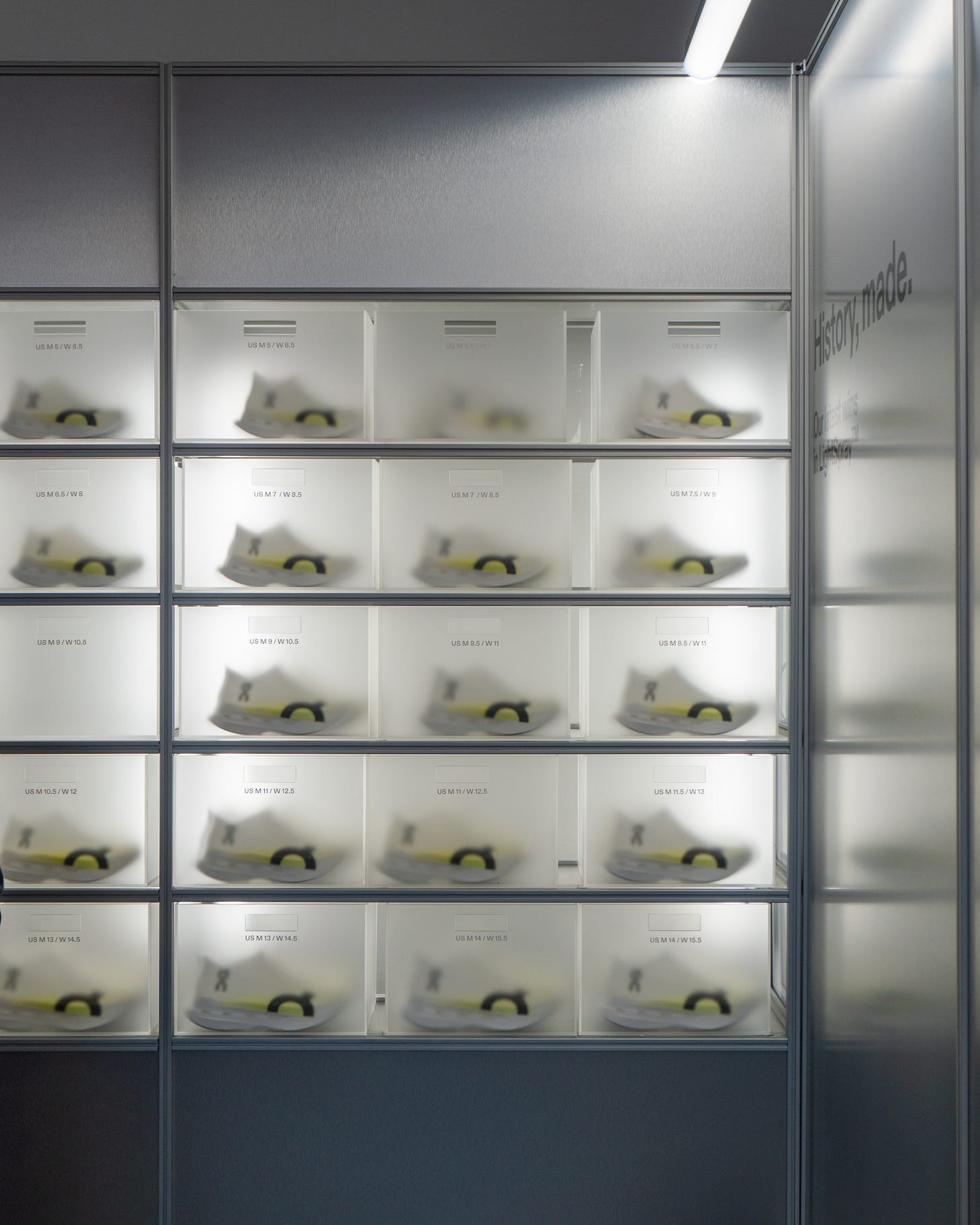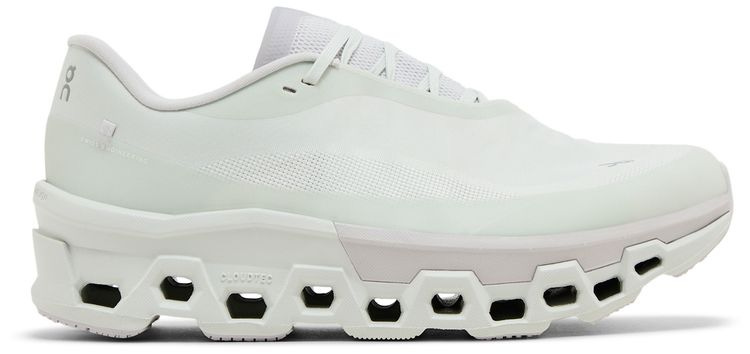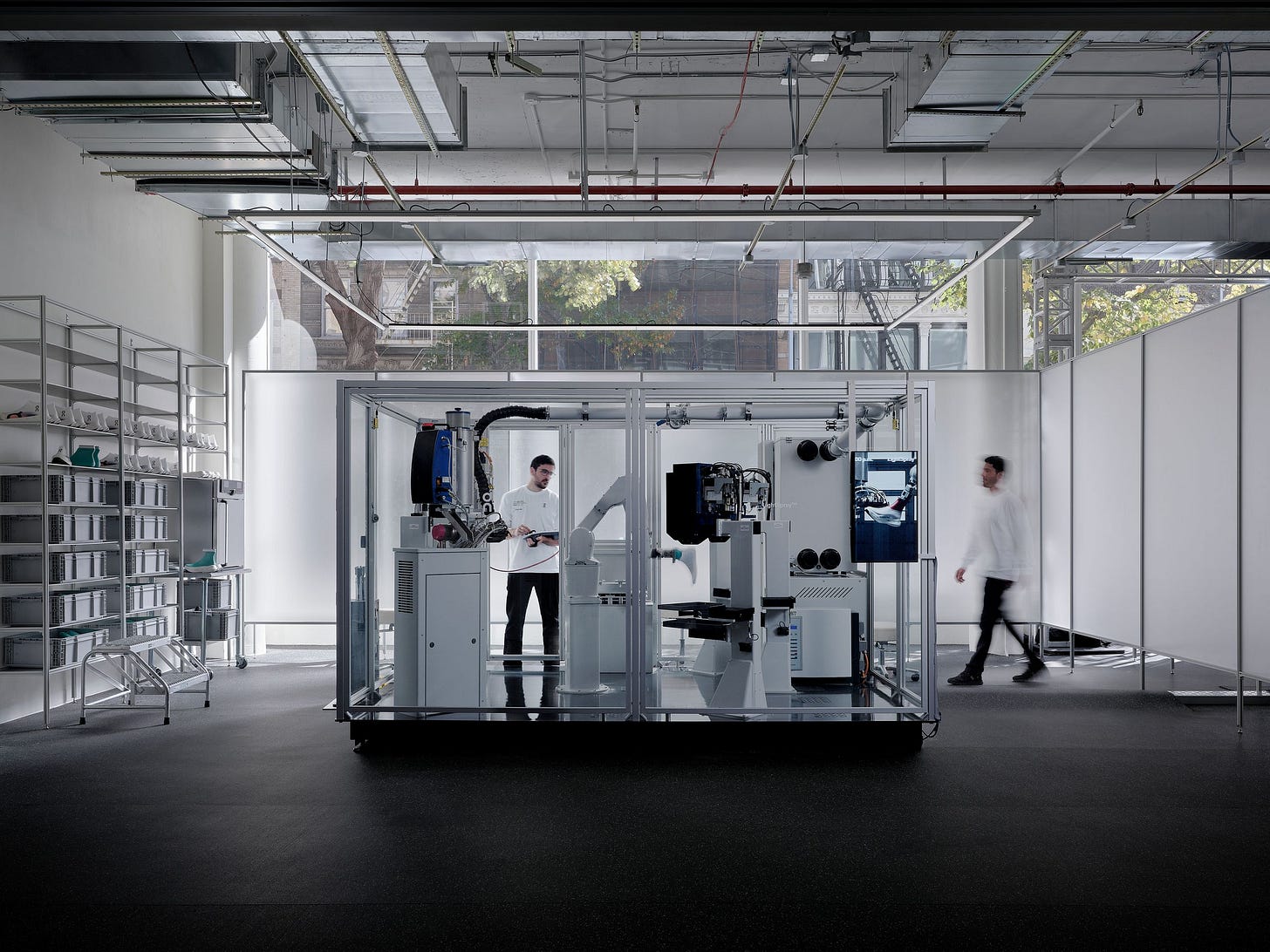On's Growth from Gimmick to Billion Dollar Brand
A breakdown of the brand's growth from a consumer perspective.
I am not really part of the running industry—I’ve never worked at a brand or really much with major brands enough to see the inner workings. I’ll get great inside-baseball information from the likes of
who has, or friends at running brands, but largely am seeing the same stuff many of you are seeing. I wanted to take a quick break from simply looking at marketing glam and new products to reflect on a shift we’re seeing in the running brand hierarchy from a growth and $$$ perspective.On’s latest quarterly earnings ( ticked them up an additional $3 billion in value. As of today On’s market cap (ONON) is 18.59B whereas Deckers Outdoor (DECK, owns Hoka) is at 16.11B. Forgive me, I’m terrible with these sorts of charts, but the bright green here is On. Inflection point is around March 2025, a month before the Cloudboom Strike LightSpray shoes launched in stores.
Maybe a year or so ago I would have said it’s a toss up for who bridged the gap from challenger to incumbent brand the fastest between Hoka and On. Now I feel like I can say On is there, and both brands took similar paths. On eclipsed Deckers Brands on market cap, and is growing at 43% year-over-year on sales. They also are increasingly doing it through DTC channels (aka On stores, and their own website), a strategy that Nike turned to and lost market share with.
On the Feet of Finance Bros
On’s initial brand value came from positioning themselves as a luxury: Swiss made, higher end pricing, and putting themselves in the high end walking and running stores. They took a similar approach to Hoka–growing primarily through active lifestyle than running specific—but tackled a different demographic. They sold their shoes in Nordstrom, Mr. Porter, high end boutiques where finance guys restock during their weekend trips to Aspen and Vail. Now the shoes are a bit more accessible, but runners seem to still harbor that perception.
However, in the last 3-4 years they’ve built a reputation as a legitimate performance brand, with a very competitive pro team, OAMC, based out of Boulder. Their marketing is far more like Nike than it is like Hoka, or even New Balance for that matter. It’s epic, inspirational, and movie level production (feat. Zendaya). They’ve made some of the fastest, lightest supershoes. Even their apparel is super high quality, something that not ever shoe brand focuses on.
Admittedly, I was a skeptic
For me, seeing On grow from what seemed like a gimmick with cut-up-hose tubing like CloudTec, to high performance, 3d sprayed uppers has been fascinating. I admittedly never liked On until they put out the Cloudmonster, Cloudboom, and tossed up collabs with one of my favorite tech wear brands, Post Archive Faction. Those shoes looked great, were made with bold, wearable colors without screaming nerdy runner (my opinion), and actually felt good while running in them. Likewise, the Post Archive Faction collabs felt like a nod to the niche gorp-wear, seeking communities I tend to haunt.
Despite being a big company, they seem to be nimble, responsive, and similar to Nike, with their finger on the pulse of things. Okay, they get it.
Playing Small, Thinking Big
I was linked up with On’s LightSpray lab at the Boston Marathon to get a closer look at the tech thanks to
and some folks in the PR department. Ran about a mile in my jeans and a pair of size 9 LightSprays; I realistically should have kept them on and ran away…catch me if you can?
On similarly is able to do something Nike (and other great companies) is also good at: jumping on new ideas, and rallying the entire company around it. I was able to interview Dr. Pablo Erat (as did
), who leads the LightSpray biz side of things out of Zurich.I understood LightSpray as something akin to Nike’s FlyPrint – something that would only grace the feet of a few lucky people and the elites. Too expensive to ever produce at scale, and mostly to prove that Nike (and On) were at the top of the pyramid when it came to performance. Turns out I was wrong: LightSpray is now one of the pillars of the business and has a decade plus long strategy planned for it.
It’s amazing to me that a technology that was originally found at a tradeshow booth became a pillar of the a billion dollar business so quickly.
LightSpray came about as a trade show concept one of their employees saw. They brought the original engineer in, worked on the formula: churning out tons of prototypes with different densities, materials, and production techniques, and were able to find the perfect medium. The other part of the investment was in building their own machinery to produce the shoes, which requires maintenance, a ton of money, and extensive skill training for the machine technicians.
The end goal is to have factories across the world, reducing the often long timelines between running store orders and production, drastically reducing shipping times and distances, and furthermore directly reducing the waste from production itself – leftover LightSpray can be recycled into new LightSpray.
As On continues to prove that this is possible, hopefully other companies try and copy them. I asked Pablo if he was worried about this, and his perspective was that if companies tried to copy this tech, then On would have lead a seismic shift in production, and the goal was accomplished.







